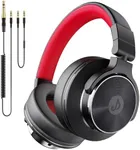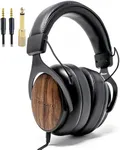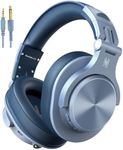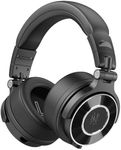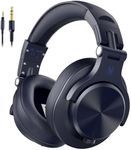Buying Guide for the Best Studio Headphones For Mixing And Mastering
When it comes to picking studio headphones for mixing and mastering, it's crucial to understand that these headphones are designed to provide a flat and accurate sound profile. This allows you to hear the music exactly as it is, without any coloration or enhancement. The goal is to make sure that your mixes translate well across all playback systems. To choose the best studio headphones for your needs, you should consider several key specifications that will impact your listening experience and the accuracy of your work.Frequency ResponseFrequency response refers to the range of frequencies that the headphones can reproduce. This is important because a wider frequency response allows you to hear more detail in your music. Typically, studio headphones should have a frequency response that covers at least 20 Hz to 20 kHz, which is the range of human hearing. If you are working with genres that have a lot of low-end or high-end detail, you might want headphones that extend beyond this range. For most users, a standard range will suffice, but if you need to hear every nuance, look for headphones with an extended frequency response.
ImpedanceImpedance is a measure of the resistance that headphones provide to the electrical signal from your audio source. This is important because it affects the volume and clarity of the sound. Studio headphones typically have higher impedance (above 50 ohms) which means they require more power to drive them properly. If you are using a professional audio interface or headphone amplifier, high-impedance headphones are a good choice. However, if you plan to use your headphones with portable devices like laptops or smartphones, you might want to opt for lower impedance (below 50 ohms) to ensure they can be driven adequately.
Driver SizeThe driver size in headphones refers to the diameter of the speaker inside the ear cups. Larger drivers (40mm and above) can generally produce better bass and a more powerful sound. This is important for mixing and mastering because it allows you to hear the full spectrum of your audio more clearly. However, larger drivers can also make the headphones bulkier and less comfortable for long sessions. If you prioritize sound quality and detail, go for larger drivers. If comfort is more important, you might prefer slightly smaller drivers.
Open-Back vs Closed-BackOpen-back headphones have ear cups that allow air and sound to pass through, providing a more natural and spacious sound. This is important for mixing and mastering because it gives you a more accurate representation of your audio. However, they also leak sound and are not ideal for noisy environments. Closed-back headphones, on the other hand, isolate you from external noise and prevent sound leakage, making them better for recording sessions. If you work in a quiet studio and need the most accurate sound, open-back headphones are the way to go. If you need isolation and versatility, closed-back headphones are a better choice.
Comfort and Build QualityComfort and build quality are crucial for long mixing and mastering sessions. This includes the materials used for the ear pads, the headband, and the overall weight of the headphones. Comfortable headphones will allow you to work for longer periods without discomfort. Look for headphones with adjustable headbands, cushioned ear pads, and a lightweight design. Build quality is also important because it affects the durability of the headphones. High-quality materials and construction will ensure that your headphones last longer and withstand the rigors of daily use. Choose headphones that feel sturdy and comfortable to wear for extended periods.

